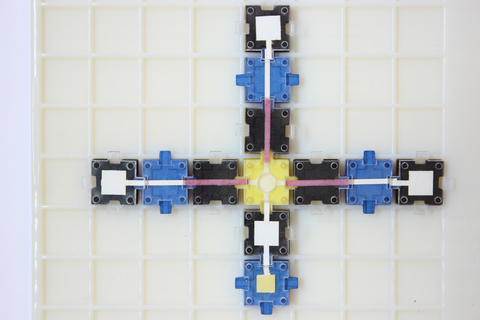An inexpensive, modular set of blocks—which can be assembled into a wide array of medical diagnostic devices—could enable smaller, low-resource laboratories to build their own tests for cancer, glucose levels or infectious diseases, according to researchers at the Massachusetts Institute of Technology.
This plug-and-play system, invented by MIT’s Little Devices Lab, utilizes paper strips and lateral flow technology similar to that used in home pregnancy tests, which change color when particular compounds are present.
The paper or glass fiber grid can be fit to different shapes, guiding the sample through a series of chemical reactions puzzled together from about 40 different pieces, called Ampli blocks.
“We see these construction kits as a way of lowering the barriers to making medical technology,” lab co-director Jose Gomez-Marquez told MIT News, with the goal of supplying researchers internationally. The pieces do not require refrigeration and can be manufactured for pennies.

(Image: Melanie Gonick/MIT)
The blocks have already been used in Chile and Nicaragua to develop pocket-sized tests for TB therapy adherence and treatment-resistant malaria, they said.
The flexibility can also allow the Ampli system to do things traditional diagnostics can’t: for example, being able to run a sample back and forth over the same test strip to boost the reliability of results from diluted urine or saliva samples. Standard lateral flow tests can only be run once.
Currently, the MIT lab is developing pieces that test for human papilloma virus and Lyme disease, as well as blocks that can synthesize compounds. The researchers’ work, funded by Autodesk and the U.S. Public Health Service, was published in the journal Advanced Healthcare Materials.